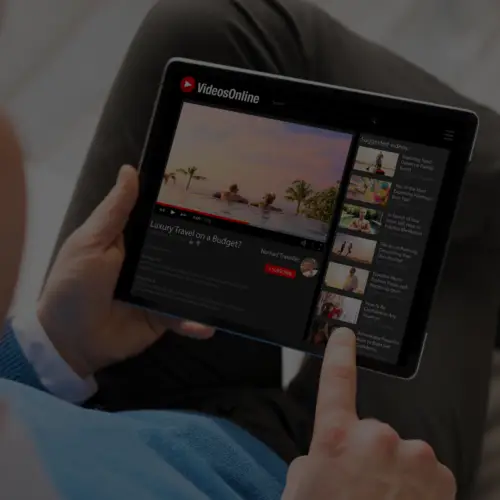30 Nov Windows 8 Streamlines Social Media Connectivity
 Microsoft recently released Windows 8 to the public for both PC and mobile devices on October 26th. The newest OS gives recent versions of Windows a major facelift, aiming for a more user friendly interface and optimized navigation for tablets and mobile devices, as well as PCs. Windows 8 is highly geared toward mobile and touch devices, and the demand for constant connectivity to social media platforms like Facebook, Twitter, and more.
Microsoft recently released Windows 8 to the public for both PC and mobile devices on October 26th. The newest OS gives recent versions of Windows a major facelift, aiming for a more user friendly interface and optimized navigation for tablets and mobile devices, as well as PCs. Windows 8 is highly geared toward mobile and touch devices, and the demand for constant connectivity to social media platforms like Facebook, Twitter, and more.
New Features
Windows 8 runs apps instead of programs. Instead of browsing your social media websites within your favorite web browser, many sites provide apps that integrate into the Windows OS. These apps run faster and smoother than web browsing, and they make use of the new visual and navigational systems of the platform.
Windows 8 uses a tile system of menus to navigate through apps and files. This system replaces the old Start Menu of navigation, and the tile navigation works great for tablets and any touch screen devices. This new navigation system builds on the Metro interface that Microsoft developed for their Windows 7 phones.

The great thing about how apps integrate into the system is that it allows apps to incorporate social media, cloud storage, and other new features built directly into the operating system.
Sharing with the New Charms Bar
The traditional start menu has been replaced with the “Charms Bar,” which allows you to edit your computer settings, configure devices, search your computer or the web, or start up apps and files. The Charms Bar also has the noticeable addition of the “Share” button. This gives you the option to easily share anything you are working on, playing, or viewing directly through email or social media. Once your profiles are set up within the OS, click share and choose which platform you want to post media on.
![]()
Integrating Social Media with Windows 8
You can integrate social media accounts directly with the operating system to connect and share directly from your computer. This has the potential to push social media platforms forward. While multi-site integration and cooperation has increased a lot over the year, and many websites provide links to connect on multiple networks, this OS-driven social media approach can streamline the process and connect social media directly with apps for even greater ease of use and connectivity.
Apple has started to touch on this idea with their iOS5 for iPhone and iPad. This has primarily been apps-driven, with increasing connectivity between apps. Incorporating social media services into the core of an OS is a significant step in the direction in which technology and social media have been heading, and it is a feature that will likely work its way into competing operating systems.
Another great thing about OS-level social media integration is that it allows you to keep track of people, companies, or interests across all of their social networks. You can find news from anyone in your contacts and even create “People” tiles to streamline media from anyone you wish to follow.
SkyDrive Cloud Storage
Windows 8 also integrates SkyDrive, Microsoft’s cloud storage service. Incorporating SkyDrive into the operating system makes it easy to keep important files online and to access them from any device with internet access, or share files with friends. The Windows 8 SDK makes it easy for developers to incorporate SkyDrive and other features of the new OS into apps.

Although there is a lot of potential with this level of integration, the system has several noticeable gaps, at least this early into its release.
Social Media Apps
Facebook is a noticeable omission from the apps market so far, and Facebook has no plans to build a native app for the OS. Microsoft; however, just unveiled its Facebook app for Windows Phone 8, so it’s quite possible they are working on a similar app for the PC version of their OS. Microsoft has developed apps for other third-party platforms such as Twitter and Skype, and third party developers have created apps that can connect to social media feeds, such as the MetroTwit app for Twitter.

Facebook profiles can be incorporated into the OS and your contacts; it’s just the new Metro-style Facebook app we are waiting for. Microsoft’s People app, which is built into the operating system, is essentially a major update to a contacts folder, and can be connected with Facebook, Twitter, and other social media outlets to keep track of any of your contact’s social updates.

While it’s still possible to run programs from prior versions of Windows, the Windows 8 framework begs for more apps to make the transition to a new style of navigation and user interface. The apps that are available, especially those developed by Microsoft, look and work great on the new OS. At times, apps may feel a bit oversimplified (something that, as a longtime Windows user, is not something I’m particularly used to). But most of the tools and customization options are still present once you get used to a drastically updated interface. The visual and interface components of this update, as far as general PC users are concerned, are long overdue.
Upgrading to Windows 8
Microsoft has definitely taken some risks with this latest version. Sales have been slow to start, but this new OS looks very capable, attractive, and easy to use, and once enough developers build apps that work with the new features, it will be very useful. It needs to build some more third-party support to embrace the new interface and design before Windows 8 gets a strong handle on the market, but it has a lot of potential. It also depends on to what degree developers are willing to embrace this cross functionality between the OS and other apps.
Windows 8 offers the capabilities, and the software and hardware customization of a Windows PC, and vies for ease of use and accessibility akin to what Apple users have enjoyed with recent Mac mobile and PC operating systems. For a limited time, you can upgrade to Windows 8 for just $39.99, a price tag that hopes to encourage early adaptors to the new system. If you’ve had a chance to try out Windows 8, let us know what you think about the OS in the comments section below!
DISCLAIMER: Microsoft is a client of Ignite Social Media. This review (positives and negatives) represents the opinions of the author who developed it independently. There was no contact whatsoever between our agency and the company relative to this blog post.






